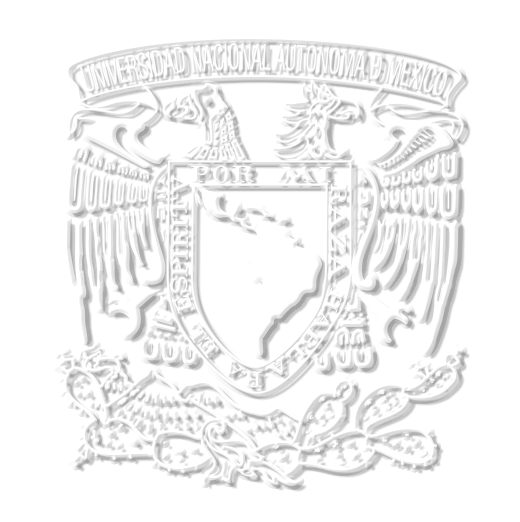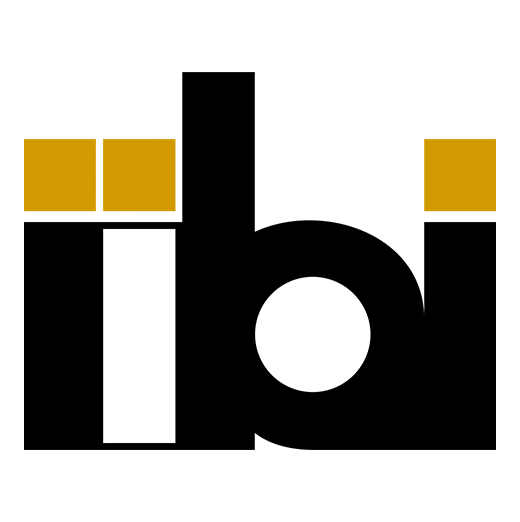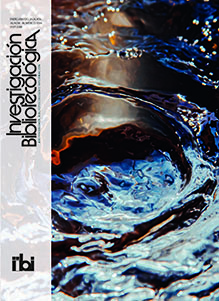Abstract
This report analyses the distribution of online attention received by uncited articles of Information Science (InfoSci). Specifically, it aims to understand citation evolution in conjunction with altmetric scores over the years of publication. As a methodology, 45 616 articles published between 2012 and 2021 in the ‘Information Science & Library Science’ category in the Web of Science database (WOS)– were collected. The publication year, citations received in each article and their respective altmetric scores were extracted from this sample. Subsequently, descriptive statistical analyses –related to altmetric scores– were conducted based on the publication year. The difference in the proportion of articles without altmetric scores among citation classes was assessed using the Student’s T-test. Besides, the Mann-Whitney test was applied to examine whether there were significant differences between citation classes according to the year of publication based on altmetric scores. Results showed that, regardless of citation class and publication year, the most frequent altmetric score among articles is zero. In conclusion, there are altmetric differences between cited and uncited articles; uncited articles tend to receive less altmetric attention than those with citations. Additionally, altmetric attention is not distributed symmetrically, since there is a predominant frequency of zero across all analysed citation classes and years.
References
Ajiferuke, Isola, Kun Lu e Dietmar Wolfram. 2010. “A Comparison of Citer and Citation-Based Measure Outcomes for Multiple Disciplines”. Journal of the American Society for Information Science and Technolog y 61 (10): 2086-96. https://doi.org/10.1002/asi.21383
Altmetric. 2023. “How is the Altmetric Attention Score Calculated?”. Altmetric Help Center. 29 setembro 2023. https://help.altmetric.com/support/solutions/articles/6000233311-how-is-the-altmetric-attention-score-calculated-
Andrade, Rodrigo de Oliveira. 2022. “Idioma em baixa”. Revista Pesquisa Fapesp, fevereiro 2022. https://revistapesquisa.fapesp.br/idioma-em-baixa/
Araújo, Ronaldo Ferreira, Gustavo Miranda Caran e Iara Vidal Pereira de Souza. 2016. “Orientação temática e coeficiente de correlação para análise comparativa entre dados altmétricos e citações: uma análise da revista DataGramaZero”. Em Questão 22 (3): 184-200 https://doi.org/10.19132/1808-5245223.184-200
Bitteti, Mario S. Di, e Julián A. Ferreras. 2017. “Publish (in English) or Perish: The Effect on Citation Rate of Using Languages Other than English in Scientific Publications”. Ambio 46: 121-27. https://doi.org/10.1007/s13280-016-0820-7
Borba, Vildeane da Rocha, Gonzalo Rubén Alvarez e Sônia Elisa Caregnato. 2019. “Análise altmétrica da produção científica das revistas brasileiras em Ciência da Informação Qualis A1 (2011-2017) no Mendeley”. Encontros Bibli: Revista Eletrônica de Biblioteconomia e Ciência da Informação 24 (55): 1-20. https://doi.org/10.5007/1518-2924.2019.e58658
Borgohain, Dhruba Jyoti, Mayank Yuvaraj e Manoj Kumar Verma. 2023. “Analysing the Relationship between Altmetric Attention Score (AAS) and Citation: A Correlational Study”. Information Discovery and Delivery 52 (1): 11-22. https://doi.org/10.1108/IDD-05-2022-0035
Bornmann, Lutz. 2015. “Alternative Metrics in Scientometrics: A Meta-Analysis of Research into Three Altmetrics”. Scientometrics 103 (3): 1123-44 https://doi.org/10.1007/s11192-015-1565-y
Bornmann, Lutz, e Hans-Dieter Daniel. 2008. “What Do Citation Counts Measure? A Review of Studies on Citing Behavior”. Journal of Documentation 64 (1): 45-80. https://doi.org/10.1108/00220410810844150
Bornmann, Lutz, Rüdiger Mutz, Christoph Neuhaus e Hans-Dieter Daniel. 2008. “Citation Counts for Research Evaluation: Standards of Good Practice for Analyzing Bibliometric Data and Presenting and Interpreting Results”. Ethics in Science and Environmental Politics 8: 93-102. https://doi.org/10.3354/esep00084
Castanha, Rafael Gutierres. 2023. “Altmetric Attention Score Extractor (v1)”. Zenodo, 21 abril 2023. https://doi.org/10.5281/ZENODO.7853578
Chingath, Vysakh, e Rajendra Babu Hanumanthappa. 2023. “Examining the Association between Citations and Altmetric Indicators of LIS Articles Indexed in Dimensions Database”. International Journal of Information Science and Management 21 (2): 55-67. https://doi.org/10.22034/ijism.2023.1977881.0
Costas, Rodrigo, Antonio Perianes-Rodríguez e Javier Ruiz-Castillo. 2017. “On the Quest for Currencies of Science: Field ‘Exchange Rates’ for Citations and Mendeley Readership”. Aslib Journal of Information Management 69 (5): 557-75. https://doi.org/10.1108/AJIM-01-2017-0023
D’Angelo, Ciriaco Andrea, e Samuele di Russo. 2019. “Testing for Universality of Mendeley Readership Distributions”. Journal of Informetrics 13 (2): 726-37. https://doi.org/10.1016/j.joi.2019.03.011
Delbianco, Natalia Rodrigues. 2022. “A comunicação científica no Twitter: um estudo altmétrico com periódicos brasileiros da Ciência da Informação”. Dissertação de nível acadêmico, Universidade Estadual Paulista “Júlio de Mesquita Filho”. http://hdl.handle.net/11449/235088
Ezema, Ifeanyi Jonas, e Cyprian I. Ugwu. 2019. “Correlating Research Impact of Library and Information Science Journals Using Citation Counts and Altmetrics Attention”. Information Discovery and Delivery 47 (3): 143-153. https://doi.org/10.1108/IDD-08-2018-0029
Fang, Zichao, Jonathan Dudek e Rodrigo Costas. 2020. “The Stability of Twitter Metrics: A Study on Unavailable Twitter Mentions of Scientific Publications”. Journal of the Association for Information Science and Technolog y 71 (12): 1455-69. https://doi.org/10.1002/asi.24344
Galligan, Finbar, e Sharon Dyas-Correia. 2013. Altmetrics: Rethinking the Way We Measure. Serials Review 39 (1): 56-61. https://doi.org/10.1080/00987913.2013.10765486
Golosovsky, Michael. 2021. “Universality of Citation Distributions: A New Understanding”. Quantitative Science Studies 2 (2): 527-43. https://doi.org/10.1162/qss_a_00127
Gontijo, Marília Catarina Andrade, e Ronaldo Ferreira de Araújo. 2019. “Métricas alternativas e dados de citação de publicações em acesso aberto sobre inteligência artificial no campo da saúde”. Ciência da Informação 48 (3): 451-52. https://doi.org/10.18225/ci.inf.v48i3.4927
Haustein, Stefanie. 2019. “Scholarly Twitter Metrics”. En Springer Handbook of Science and Technolog y Indicators, organizado por Wolfgang Glänzel, Henk F. Moed, Ulrich Schmoch e Mike Thelwall, 729-60. Cham: Springer
Kassab, Omar, Lutz Bornmann e Robin Haunschild. 2020. “Can Altmetrics Reflect Societal Impact Considerations?: Exploring the Potential of Altmetrics in the Context of a Sustainability Science Research Center”. Quantitative Science Studies 1 (2): 1-18. https://doi.org/10.1162/qss_a_00032
Liang, Liming, Zhen Zhong e Ronald Rousseau. 2015. “Uncited Papers, Uncited Authors and Uncited Topics: A Case Study in Library and Information Science”. Journal of Informetrics 9 (1): 50-58. https://doi.org/10.1016/j.joi.2014.11.001
Liu, Chieh, e Mu-Hsuan Huang. 2022. “Exploring the Relationships between Altmetric Counts and Citations of Papers in Different Academic Fields Based on Co-Occurrence Analysis”. Scientometrics 127: 4939-58. https://doi.org/10.1007/s11192-022-04456-w
Milojević, Staša. 2020. “Towards a More Realistic Citation Model: The Key Role of Research Team Sizes”. Entropy 22 (8): 875 https://doi.org/10.3390/e22080875
Moed, Henk F. 2017. Applied Evaluative Informetrics. Cham: Springer. Nascimento, Andréa Gonçalves do. 2016. Altmetria para Bibliotecários: Guia Prático de Métricas Alternativas para a Avaliação da Produção Científica. Rio de Janeiro: edição do autor.
Oliveira, Ely Francina Tannuri, e Maria Cláudia Cabrini Gracio. 2011. “Indicadores bibliométricos em ciência da informação: análise dos pesquisadores mais produtivos no tema estudos métricos na base Scopus”. Perspectivas em Ciência da Informação 16 (4): 16-28. https://doi.org/10.1590/S1413-99362011000400003
Piwowar, Heather. 2013. “Introduction Altmetrics: What, Why and Where?: Introduction Altmetrics: What, Why and Where?”. Bulletin of the American Society for Information Science and Technolog y 39 (4): 8-9. https://doi.org/10.1002/bult.2013.1720390404
Price, Derek J. de Solla. 1965. “Is Technology Historically Independent of Science? A Study in Statistical Historiography.” Technolog y and Culture 6 (4): 553-568. https://doi.org/10.2307/3101749
Priem, Jason, Paul Groth e Dario Taraborelli. 2012. “The Altmetrics Collection”. PLoS ONE 7 (11): e48753. https://doi.org/10.1371/journal.pone.0048753
Priem, Jason, Paul Groth, Dario Taraborelli e Cameron Neylon. 2010. “Altmetrics: A Manifesto”. Altmetrics. https://altmetrics.org/manifesto/
Shema, Hadas, Judit Bar-Ilan e Mike Thelwall. 2015. “How is Research Blogged? A Content Analysis Approach”. Journal of the Association for Information Science and Technolog y 66 (6): 1136-49. https://asistdl.onlinelibrary.wiley.com/doi/full/10.1002/asi.23239
Silva Filho, Rubens da Costa, e Samile Andrea de Souza Vanz. 2019. “Impacto de altmetrics sobre a visibilidade de artigos em acesso aberto da enfermagem brasileira: um estudo de caso”. Transinformação 31: 1-11. https://doi.org/10.1590/2318-0889201931e190025
———. 2021. “Análise da produção científica da enfermagem e seus leitores no Mendeley”. Revista Ibero-Americana de Ciência da Informação 14 (1): 215-37. https://periodicos.unb.br/index.php/RICI/article/view/31979
Sud, Pardeep, e Mike Thelwall. 2014. “Evaluating Altmetrics”. Scientometrics 98 (2): 1131-43. https://doi.org/10.1007/s11192-013-1117-2
Thelwall, Mike, e Kayvan Kousha. 2015. “Web Indicators for Research Evaluation. Part 1: Citations and Links to Academic Articles from the Web”. El Profesional de la Información 24 (5): 587-606. https://doi.org/10.3145/epi.2015.sep.08
Thelwall, Mike, e Paul Wilson. 2016. “Mendeley Readership Altmetrics for Medical Articles: An Analysis of 45 Fields”. Journal of the Association for Information Science and Technolog y 67 (8): 1962-72. https://asistdl.onlinelibrary.wiley.com/doi/10.1002/asi.23501
Wallace, Matthew L., Vincent Larivière e Yves Gingras. 2009. “Modeling a Century of Citation Distributions”. Journal of Informetrics 3 (4): 296-303. https://doi.org/10.1016/j.joi.2009.03.010
Wouters, Paul, e Rodrigo Costas. 2012. Users, Narcissism and Control: Tracking the Impact of Scholarly Publications in the 21st Century. Utrecht: SurfFoundation. http://research-acumen.eu/wp-content/uploads/Users-narcissism-and-control.pdf
Zahedi, Zohreh, Rodrigo Costas e Paul Wouters. 2014. “How Well Developed Are Altmetrics? A Cross-Disciplinary Analysis of the Presence of ‘Alternative Metrics’ in Scientific Publications”. Scientometrics 101 (2): 1491-1513. https://doi.org/10.1007/s11192-014-1264-0
Authors:
- They must sent the publication authorization letter to Investigación Bibliotecológica: archivonomía, bibliotecología e información.
- They can share the submission with the scientific community in the following ways:
- As teaching support material
- As the basis for lectures in academic conferences
- Self-archiving in academic repositories.
- Dissemination in academic networks.
- Posting to author’s blogs and personal websites
These allowances shall remain in effect as long as the conditions of use of the contents of the journal are duly observed pursuant to the Creative Commons:Attribution-NonCommercial-NoDerivatives 4.0 license that it holds. DOI links for download the full text of published papers are provided for the last three uses.
Self-archiving policy
For self-archiving, authors must comply with the following
a) Acknowledge the copyright held by the journal Investigación Bibliotecológica: archivonomía, bibliotecología e información.
b) Establish a link to the original version of the paper on the journal page, using, for example, the DOI.
c) Disseminate the final version published in the journal.
Licensing of contents
The journal Investigación Bibliotecológica: archivonomía, bibliotecología e información allows access and use of its contents pursuant to the Creative Commons license: Attribution- Non-commercial-NoDerivatives 4.0.

Investigación Bibliotecológica: archivonomía, bibliotecología e información by Universidad Nacional Autónoma de México is licensed under a Creative Commons Attribution-NonCommercial-NoDerivatives 4.0 Internacional License.
Creado a partir de la obra en http://rev-ib.unam.mx/ib.
This means that contents can only be read and shared as long as the authorship of the work is acknowledged and cited. The work shall not be exploited for commercial ends nor shall it been modified.
Limitation of liability
The journal is not liable for academic fraud or plagiarism committed by authors, nor for the intellectual criteria they employ. Similarly, the journal shall not be liable for the services offered through third party hyperlinks contained in papers submitted by authors.
In support of this position, the journal provides the Author’s Duties notice at the following link: Responsibilities of authors.
The director or editor of the journal shall notify authors in the event it migrates the contents of the journal’s official website to a distinct IP or domain.








